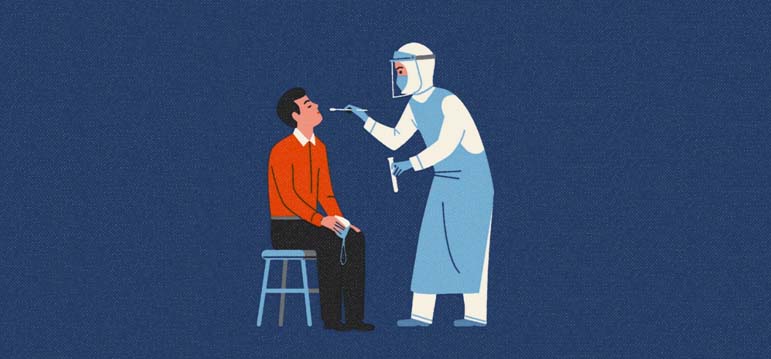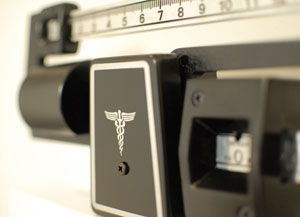How Does the COVID-19 Test Work?
Tenzin Gyaltsen (Get Well Clinic)

We’ve all seen the videos online. A gowned individual sticks a long cotton swab into the back of someone’s nose and twists it around for a few seconds. Their unfortunate victim winces with discomfort but is evidently fine once the swab is removed (although maybe a bit teary-eyed). But what happens to the swab and its mucosal contents and how do specialists distinguish a COVID-19-positive from a COVID-19-negative case? How accurate actually are these results?
Upon arrival to a testing lab, the contents of the swab will be extracted and subjected to a reverse transcription-polymerase chain reaction (RT-PCR) test. Firstly, the sample is subjected to a series of steps that removes unneeded molecules such as proteins and lipids so that only genetic material remains. In a COVID-19-positive patient, the remaining genetic material (called RNA) is likely made up mostly of the patient’s own RNA and, to a lesser extent, RNA from the COVID-19 virus.
The viral RNA must first be replicated, a process known as “amplification”, in order to be plentiful enough for detection. For amplification to occur, the RNA is converted to DNA using an enzyme (a handy biological molecule) called reverse transcriptase. The amplification process requires a number of biochemical reagents (ingredients), each aiding in amplification in different ways. Within this “master mix” of ingredients is found heat-resistant DNA polymerase, another enzyme, that is required to produce new copies of viral DNA from existing copies. In addition, dNTPs (nucleotides) are the building blocks of RNA and DNA, and must be added to the sample in order for DNA polymerase to build new DNA. Finally, specific DNA primers, genetic fragments that bind only to viral DNA, are added and serve as initiation sites at which DNA polymerase may operate. Of course, if no viral RNA/DNA are present (i.e. a COVID-19-negative patient), specific DNA primers will not bind and no amplification will occur.
Once the different reagents are added, the sample is placed within a PCR machine that facilitates amplification through a 3 step cycle: denaturation (strand separation), annealing (DNA primer binding) and extension (new DNA construction). Each of these steps occur optimally at a specific temperature which is maintained by the machine in order to properly replicate the viral DNA (if present). By adding a fluorescent (light-emitting) dye or probe that binds to the sample’s DNA, scientists can determine if viral DNA has been replicated based on levels of detected fluorescence. If a sample has greater fluorescence compared to a control (a sample with no viral DNA), it can then be said that the sample contains viral genetic material and that the patient is COVID-19-positive.
After visiting a designated Ontario testing centre, RT-PCR results should be posted online within approximately 2–4 days (this also includes emergency department visits). But how accurate are these results?
It goes without saying that while the world combats COVID-19, other diseases and medical conditions aren’t simply going to wait their own turn. If you would like to seek medical help from a doctor but are hesitant to visit a clinic in-person, please contact us (either through the online chat system or call us 416.508.5691) to book a virtual appointment!



